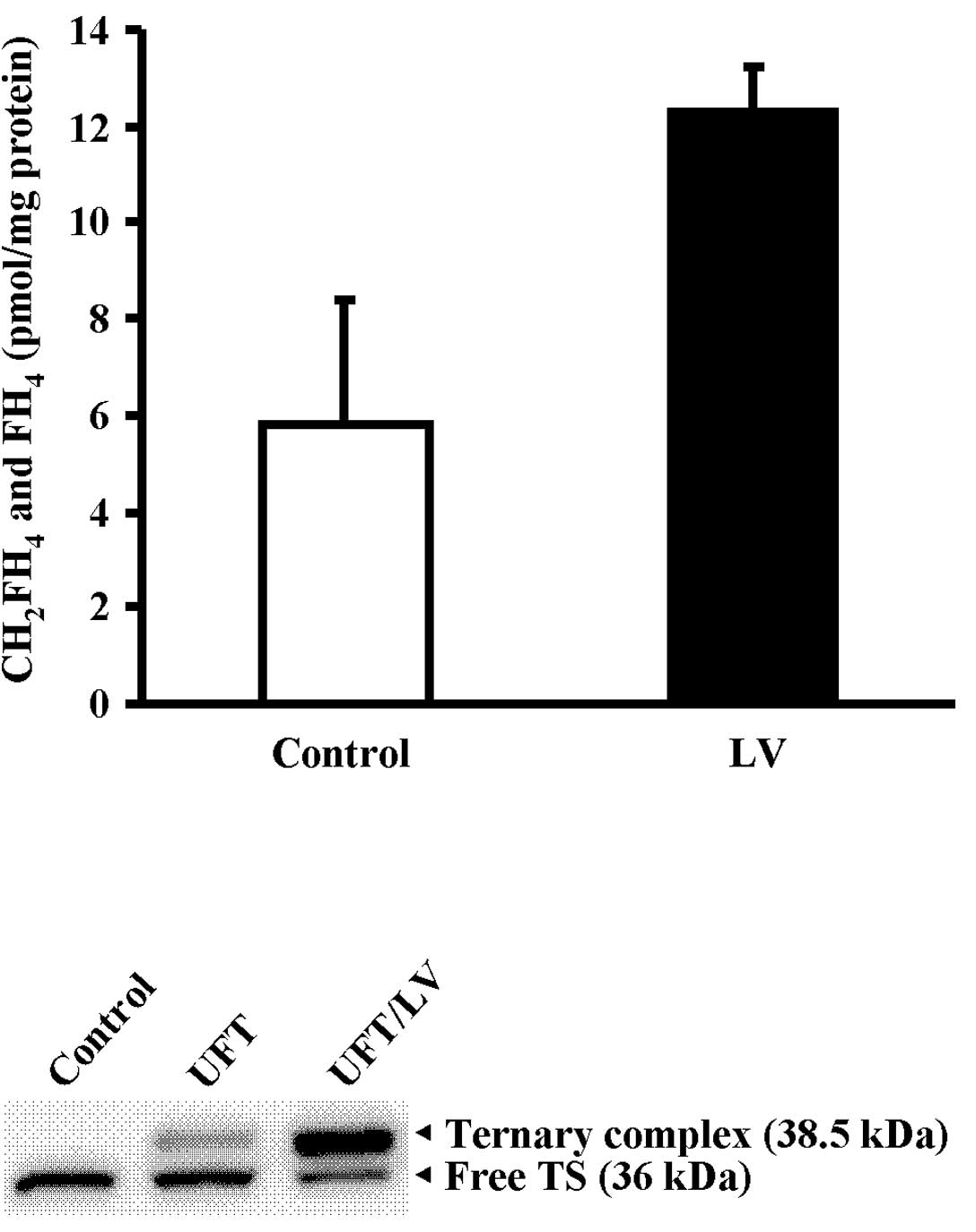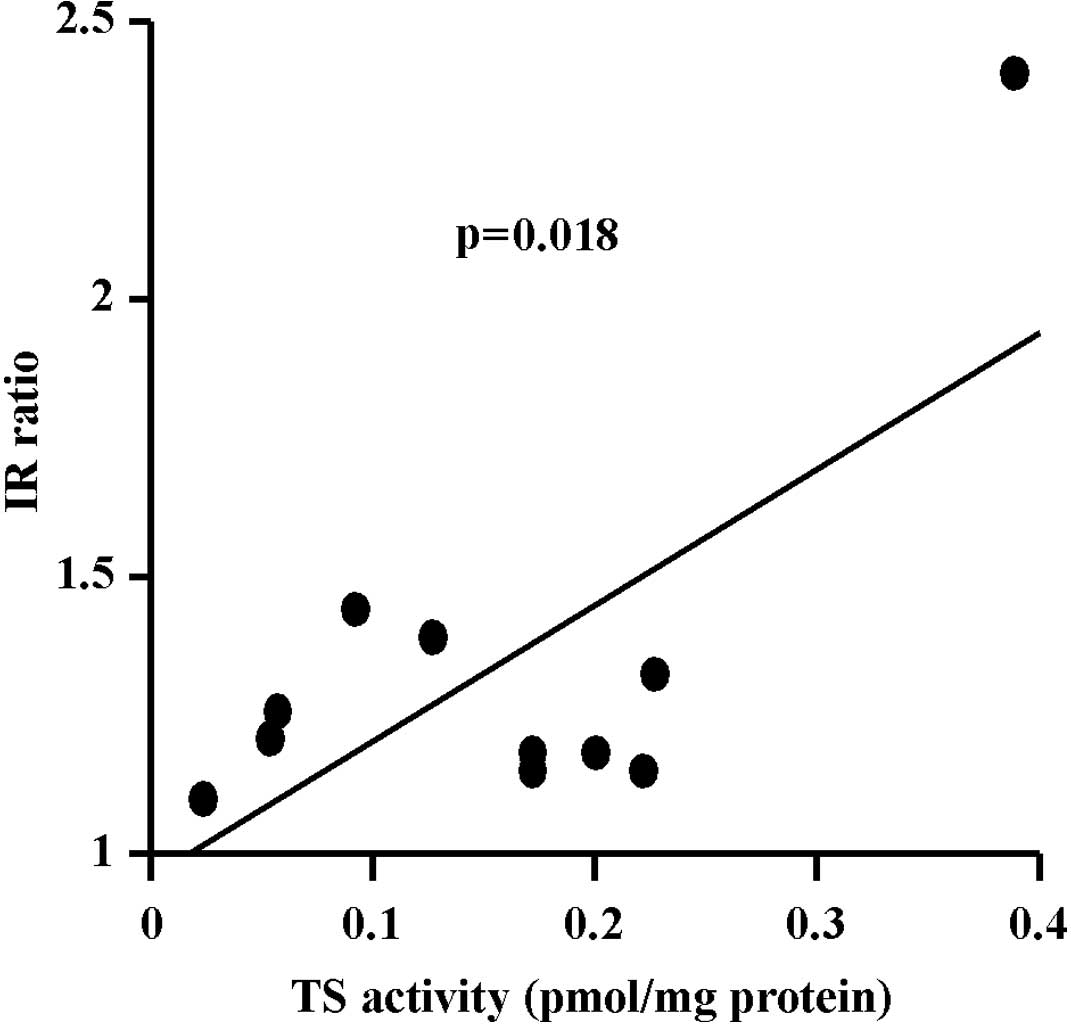|
1
|
Kuebler JP, Wieand HS, O’Connell MJ, et
al: Oxaliplatin combined with weekly bolus fluorouracil and
leucovorin as surgical adjuvant chemotherapy for stage II and III
colon cancer: results from NSABP C-07. J Clin Oncol. 25:2198–2204.
2007. View Article : Google Scholar
|
|
2
|
De Gramont A, Figer A, Seymour M, et al:
Leucovorin and fluorouracil with or without oxaliplatin as
first-line treatment in advanced colorectal cancer. J Clin Oncol.
18:2938–2947. 2000.
|
|
3
|
Tournigand C, Andre T, Achille E, et al:
FOLFIRI followed by FOLFOX6 or the reverse sequence in advanced
colorectal cancer: a randomized GERCOR study. J Clin Oncol.
22:229–237. 2004. View Article : Google Scholar : PubMed/NCBI
|
|
4
|
Maindrault-Goebel F, De Gramont A, Louvet
C, et al: High-dose intensity oxaliplatin added to the simplified
bimonthly leucovorin and 5-fluorouracil regimen as second-line
therapy for metastatic colorectal cancer (FOLFOX 7). Eur J Cancer.
37:1000–1005. 2001. View Article : Google Scholar
|
|
5
|
Shirao K, Hoff PM, Ohtsu A, et al:
Comparison of the efficacy, toxicity, and pharmacokinetics of a
uracil/tegafur (UFT) plus oral leucovorin (LV) regimen between
Japanese and American patients with advanced colorectal cancer:
joint United States and Japan study of UFT/LV. J Clin Oncol.
22:3466–3474. 2004. View Article : Google Scholar
|
|
6
|
Lembersky BC, Wieand HS, Petrelli NJ, et
al: Oral uracil and tegafur plus leucovorin compared with
intravenous fluorouracil and leucovorin in stage II and III
carcinoma of the colon: results from National Surgical Adjuvant
Breast and Bowel Project Protocol C-06. J Clin Oncol. 24:2059–2064.
2006. View Article : Google Scholar
|
|
7
|
Cassidy J, Tabernero J, Twelves C, et al:
XELOX (capecitabine plus oxaliplatin): active first-line therapy
for patients with metastatic colorectal cancer. J Clin Oncol.
22:2084–2091. 2004. View Article : Google Scholar : PubMed/NCBI
|
|
8
|
Spears CP, Gustavsson BG, Berne M, Frosing
R, Bernstein L and Hayes AA: Mechanisms of innate resistance to
thymidylate synthase inhibition after 5-fluorouracil. Cancer Res.
48:5894–5900. 1988.PubMed/NCBI
|
|
9
|
Houghton JA, Maroda SJ Jr, Phillips JO and
Houghton PJ: Biochemical determinants of responsiveness to
5-fluorouracil and its derivatives in xenografts of human
colorectal adenocarcinomas in mice. Cancer Res. 41:144–149.
1981.PubMed/NCBI
|
|
10
|
Van der Wilt CL, Backus HH, Smid K, et al:
Modulation of both endogenous folates and thymidine enhance the
therapeutic efficacy of thymidylate synthase inhibitors. Cancer
Res. 61:3675–3681. 2001.PubMed/NCBI
|
|
11
|
Raghunathan K, Schmitz JC and Priest DG:
Impact of schedule on leucovorin potentiation of fluorouracil
antitumor activity in dietary folic acid deplete mice. Biochem
Pharmacol. 53:1197–1202. 1997. View Article : Google Scholar : PubMed/NCBI
|
|
12
|
Okabe H, Toko T, Saito H, et al:
Augmentation of the chemotherapeutic effectiveness of UFT, a
combination of tegafur [1-(2-tetrahydrofuryl)-5-fluorouracil] with
uracil, by oral l-leucovorin. Anticancer Res. 17:157–164.
1997.PubMed/NCBI
|
|
13
|
Ishikawa T, Sekiguchi F, Fukase Y, Sawada
N and Ishitsuka H: Positive correlation between the efficacy of
capecitabine and doxifluridine and the ratio of thymidine
phosphorylase to dihydropyrimidine dehydrogenase activities in
tumors in human cancer xenografts. Cancer Res. 58:685–690.
1998.
|
|
14
|
Bradford MM: A rapid and sensitive method
for the quantitation of microgram quantities of protein utilizing
the principle of protein-dye binding. Anal Biochem. 72:248–254.
1976. View Article : Google Scholar : PubMed/NCBI
|
|
15
|
Spears CP, Shahinian AH, Moran RG,
Heidelberger C and Corbett TH: In vivo kinetics of thymidylate
synthetase inhibition of 5-fluorouracil-sensitive and -resistant
murine colon adenocarcinomas. Cancer Res. 42:450–456.
1982.PubMed/NCBI
|
|
16
|
Priest DG, Schmitz JC, Bunni MA and Stuart
RK: Pharmacokinetics of leucovorin metabolites in human plasma as a
function of dose administered orally and intravenously. J Natl
Cancer Inst. 83:1806–1812. 1991. View Article : Google Scholar : PubMed/NCBI
|
|
17
|
Burnette WN: ‘Western blotting’:
electrophoretic transfer of proteins from sodium dodecyl
sulfate-polyacrylamide gels to unmodified nitrocellulose and
radiographic detection with antibody and radioiodinated protein A.
Anal Biochem. 112:195–203. 1981.
|
|
18
|
Drake JC, Allegra CJ and Johnston PG:
Immunological quantitation of thymidylate
synthase-FdUMP-5,10-methylenetetrahydrofolate ternary complex with
the monoclonal antibody TS 106. Anticancer Drugs. 4:431–435. 1993.
View Article : Google Scholar : PubMed/NCBI
|
|
19
|
Johnston PG, Drake JC, Trepel J and
Allegra CJ: Immunological quantitation of thymidylate synthase
using the monoclonal antibody TS 106 in 5-fluorouracil-sensitive
and -resistant human cancer cell lines. Cancer Res. 52:4306–4312.
1992.
|
|
20
|
Van Triest B, Pinedo HM, van Hensbergen Y,
et al: Thymidylate synthase level as the main predictive parameter
for sensitivity to 5-fluorouracil, but not for folate-based
thymidylate synthase inhibitors, in 13 nonselected colon cancer
cell lines. Clin Cancer Res. 5:643–654. 1999.
|
|
21
|
Salonga D, Danenberg KD, Johnson M, et al:
Colorectal tumors responding to 5-fluorouracil have low gene
expression levels of dihydropyrimidine dehydrogenase, thymidylate
synthase, and thymidine phosphorylase. Clin Cancer Res.
6:1322–1327. 2000.
|
|
22
|
Aschele C, Debernardis D, Casazza S, et
al: Immunohistochemical quantitation of thymidylate synthase
expression in colorectal cancer metastases predicts for clinical
outcome to fluorouracil-based chemotherapy. J Clin Oncol.
17:1760–1770. 1999.
|
|
23
|
Cascinu S, Aschele C, Barni S, et al:
Thymidylate synthase protein expression in advanced colon cancer:
correlation with the site of metastasis and the clinical response
to leucovorin-modulated bolus 5-fluorouracil. Clin Cancer Res.
5:1996–1999. 1999.
|
|
24
|
Davies MM, Johnston PG, Kaur S and
Allen-Mersh TG: Colorectal liver metastasis thymidylate synthase
staining correlates with response to hepatic arterial floxuridine.
Clin Cancer Res. 5:325–328. 1999.PubMed/NCBI
|
|
25
|
Corsi DC, Ciaparrone M, Zannoni G, et al:
Predictive value of thymidylate synthase expression in resected
metastases of colorectal cancer. Eur J Cancer. 38:527–534. 2002.
View Article : Google Scholar : PubMed/NCBI
|
|
26
|
Gonen M, Hummer A, Zervoudakis A, et al:
Thymidylate synthase expression in hepatic tumors is a predictor of
survival and progression in patients with resectable metastatic
colorectal cancer. J Clin Oncol. 21:406–412. 2003. View Article : Google Scholar : PubMed/NCBI
|
|
27
|
Leichman CG, Lenz HJ, Leichman L, et al:
Quantitation of intratumoral thymidylate synthase expression
predicts for disseminated colorectal cancer response and resistance
to protracted-infusion fluorouracil and weekly leucovorin. J Clin
Oncol. 15:3223–3229. 1997.
|
|
28
|
Shirota Y, Stoehlmacher J, Brabender J, et
al: ERCC1 and thymidylate synthase mRNA levels predict survival for
colorectal cancer patients receiving combination oxaliplatin and
fluorouracil chemotherapy. J Clin Oncol. 19:4298–4304. 2001.
|
|
29
|
Etienne MC, Chazal M, Laurent-Puig P, et
al: Prognostic value of tumoral thymidylate synthase and p53 in
metastatic colorectal cancer patients receiving fluorouracil-based
chemotherapy: phenotypic and genotypic analyses. J Clin Oncol.
20:2832–2843. 2002. View Article : Google Scholar
|
|
30
|
Johnston PG, Lenz HJ, Leichman CG, et al:
Thymidylate synthase gene and protein expression correlate and are
associated with response to 5-fluorouracil in human colorectal and
gastric tumors. Cancer Res. 55:1407–1412. 1995.PubMed/NCBI
|
|
31
|
Kornmann M, Link KH, Lenz HJ, et al:
Thymidylate synthase is a predictor for response and resistance in
hepatic artery infusion chemotherapy. Cancer Lett. 118:29–35. 1997.
View Article : Google Scholar : PubMed/NCBI
|
|
32
|
Takenoue T, Nagawa H, Matsuda K, et al:
Relation between thymidylate synthase expression and survival in
colon carcinoma, and determination of appropriate application of
5-fluorouracil by immunohistochemical method. Ann Surg Oncol.
7:193–198. 2000. View Article : Google Scholar
|
|
33
|
Ichikawa W, Uetake H, Shirota Y, et al:
Combination of dihydropyrimidine dehydrogenase and thymidylate
synthase gene expressions in primary tumors as predictive
parameters for the efficacy of fluoropyrimidine-based chemotherapy
for metastatic colorectal cancer. Clin Cancer Res. 9:786–791.
2003.
|
|
34
|
Lee JH, Park JH, Jung Y, et al: Histone
deacetylase inhibitor enhances 5-fluorouracil cytotoxicity by
down-regulating thymidylate synthase in human cancer cells. Mol
Cancer Ther. 5:3085–3095. 2006. View Article : Google Scholar
|
|
35
|
Wada Y, Yoshida K, Suzuki T, et al:
Synergistic effects of docetaxel and S-1 by modulating the
expression of metabolic enzymes of 5-fluorouracil in human gastric
cancer cell lines. Int J Cancer. 119:783–791. 2006. View Article : Google Scholar : PubMed/NCBI
|
|
36
|
Takiuchi H, Kawabe S, Gotoh M and Katsu K:
Thymidylate synthase gene expression in primary tumors predicts
activity of s-1-based chemotherapy for advanced gastric cancer.
Gastrointest Cancer Res. 1:171–176. 2007.PubMed/NCBI
|















